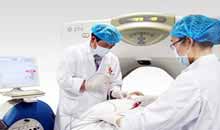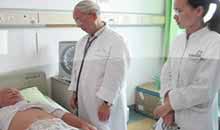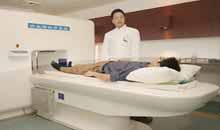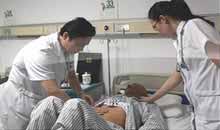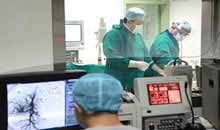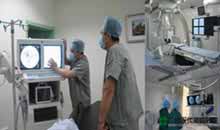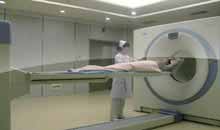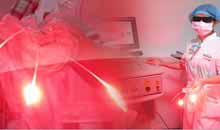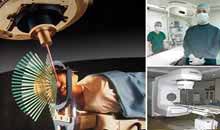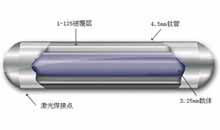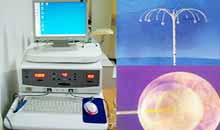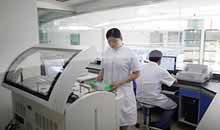- Basic
- Symptoms
- Diagnosis
- Treatments
What is Bile Duct Carcinoma?
Bile duct carcinoma originates from extrahepatic bile duct and includes malignant tumor located from hepatic hilar region to the lower end of common bile duct. According to the position of tumor, bile duct carcinoma can be divided into two categories: intrahepatic bile duct carcinoma and extrahepatic bile duct carcinoma; furthermore, extrahepatic bile duct carcinoma can also be divided into upper bile duct carcinoma (bile duct carcinoma of porta hepatis), middle bile duct carcinoma and lower bile duct carcinoma, in which bile duct carcinoma of porta hepatis is mostly seen.
Incidence Rate of Bile Duct Carcinoma
Bile duct carcinoma is a kind of rare cancer; each year there will be about 2000-3000 new cases and about 0.01%-0.46% among every 100,000 people would suffer from bile duct carcinoma. While the incidence rate of bile duct carcinoma in Southeast Asia is relatively high, and the incidence rate would also increase as age goes by; incidence rate of male is slightly higher than that of female, and both the incidence rates have increase trend in recent years.
Causes of Bile Duct Carcinoma
The causes of bile duct carcinoma have not been defined yet, but these factors like chronic inflammation of biliary tract, calculus of bile duct or gallbladder stone, liver fluke, cystic malformation of the bile duct, may impose certain functions for triggering bile duct carcinoma.
1. Chronic inflammation of biliary tract: long term chronic inflammation stimulation is the foundation of bile duct carcinoma occurrence, because it is found in clinical that all diseases related to bile duct carcinoma would lead to chronic inflammation of bile duct.
2. Calculus of bile duct and gallbladder stone: 20-57% of bile duct carcinoma patients also suffer from gallstone or gallbladder stone, therefore, it is believed that chronic inflammation of gallstone may be the carcinogenic agent.
3. Cystic malformation of bile duct (congenital cholangiectasis): congenital biliary duct cyst can easily turn into carcinomatous change, and when pancreaticocholang synoflow becomes abnormal, pancreatic fluid shall reversely flow into bile duct and this causes canceration of bile duct epithelium, which is the main cause for carcinomatous change.
4. Liver fluke (Chinese liver fluke): at Southeast Asia region, people eat fresh fishes and therefore some suffer from infection of biliary tract, cholestatis, fibrosis surrounded around bile duct or bile duct proliferation and so on. This is one factor causing bile duct carcinoma.
Nursing Methods for Bile Duct Carcinoma
Living nursing
1. Go to hospital for periodical review;
2. living shall be regular; work shall also be combined with rest reasonably;
3. Do some sports properly, for example: taking a walk, doing breathing exercise;
Diet nursing
1. Eat more these foods that possess anti-cancer function, like buckwheat, coixseed, tofu;
2. Eat more anti-infection and anti-cancer foods, like mung bean, rutabaga, bitter melon, lily;
3. Eat some foods that possess the function of cholagogue and purgation, like fig, walnut, sesame, holothurians.
The most suitable treatment method for bile duct carcinoma
The multiple disciplines medical team composed by surgeons, pathologists, radio-oncologists and professional nurses, can provide patients with customized treatment plan through consultations as per bile duct carcinoma patients’ condition, so that greatly improve the therapeutic effect of patients.
What kinds of supports can be obtained?
Practice proves that the clinic team services composed by multiple disciplines like oncosurgery, oncology, pathology, imageology and anesthesia doctors as well as professional nurses, can provide patients with most effective, most suitable and most economic treatment plan, and also can greatly improve the therapeutic effect of treating cancer patients.
“One station” medical system constructed by Modern Cancer Hospital Guangzhou combining multiple disciplines, can perform comprehensive diagnosis and treatment for patients under the condition of without adding patients’ burden. Therefore, on one hand, it can provide all-round and heartfelt medical services, and on the other hand, it improves medical efficiency and level. There are many channels can be applied to conduct the communication between patients and doctors, like online consultation, email, telephone conversation, and face-to-face consultation. All these consultation services can effectively help patients to fight the cancer. While the medical team faced by the patients includes doctors, nurses, dietitians, interpreters and so on to meet various demands in different level of different countries. Patients would be more confident under the unobstructed communication environment to cooperate the hospital to diagnose and treat the diseases.
Bile duct carcinoma originates from extrahepatic bile duct and includes malignant tumor located from hepatic hilar region to the lower end of common bile duct. The incidence rate of bile duct cancer have increase trend in recent years, and even in some high risky area, the incidence rate has doubled. The malignancy of bile duct cancer is very high, and its main symptoms are jaundice, abdominal pain, itch of skin and other related symptoms.
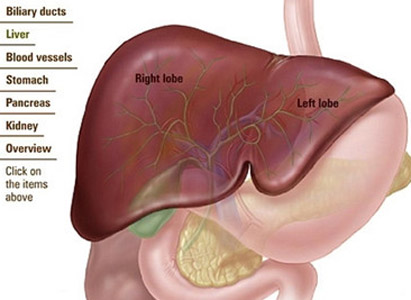
1. Jaundice: as bile duct cancer patients have no obvious typical symptoms and most of them won’t go to hospital until jaundice appears; jaundice is the earliest and most important symptom of bile duct cancer, and it is said that 90-98% bile duct cancer patients have different degree of yellow dye to skin and sclera. Jaundice would get worse gradually without pain for most of the cases; in a few cases, jaundice manifests as undulant; jaundice for upper bile duct cancer would appear earlier than that of middle or lower bile duct cancer as there are buffering function of gall bladder.
2. Abdominal pain: nearly half of patients would suffer from abdominal distention or discomforts, weight loss, poor appetite, etc. These symptoms are usually regarded as early warning symptoms of bile duct cancer. According to clinical observation, 3 months later, bile duct patients would suffer from abdominal pain.
4. Itch of skin: itch may be caused after or prior to the occurrence of jaundice and is due to the increase of bilirubin content in blood and this stimulates the peripheral nerve of skin so that cause itches to skin. Sometimes there are some other accompanying symptoms like overspeed heartbeat, bleeding tendency, listlessness, acratia, abdominal distention, etc.
5. Other symptoms: besides the above mentioned symptoms, there are some other symptoms like nausea and vomiting, weight loss, deep yellow urine like soy sauce or strong tea, light yellow stool shaped like pot clay and so on; tumor may collapse in late stage, then bile duct bleeding shall be found and concealed blood test of stool or black stool is positive; this may even cause severe symptom like anaemia; patients with hepatic metastasis may suffer from liver enlargement, liver cirrhosis and so on.
Methods for diagnosing bile duct cancer are various and can be divided into three types: laboratory examination, imaging examination and pathological examination. Hereby, we would like to introduce these diagnosis methods in details:
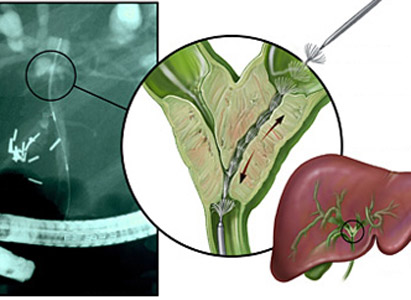
Method of bile duct cancer diagnosis:
1. Laboratory examination: it mainly examines liver disfunction of obstructive jaundice, for example, increase of bilirubin or alkaline phosphatase.
2. B ultrasound: B ultrasound can display dilated bile duct or obstructive position through repeated and careful examination, even indicate the tumor out.
3. MRCP examination: MRCP can largely display the full view of intrahepatic bile duct tree, the position and scope of cancertous obstruction, whether there is encroachment of liver parenchyma or liver metastasis and so on; it is helpful for distinguishing duodenal papilla tumor and cancer of pancreas head.
4. CT examination: CT examination can accurately display cholangiectasis, position being obstructed for bile tract and its scope, and define the identifications of lesion.
5. ERCP examination: ERCP examination can get to know the general status of the whole bile tract and also collect the bile and the fallen-off bile duct cancer cells.
6. PTC examination: PTC examination can clearly display the morphous, distribution of intra or extra-hepatic bile duct tree and obstructive position as well, so it is an accurate method to diagnose bile duct cancer.
The treatment methods for bile duct cancer are various: In addition to the common chemotherapy or radiotherapy with surgery, special Chinese medicine treatments and bile duct cancer interventional therapy are also applicable. Hereby we would like to introduce these treatment options:
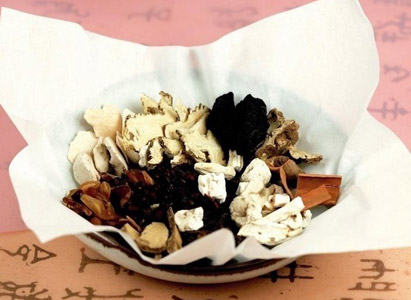
1. Surgery of bile duct cancer
Surgical resection can obtain long-term survival chance for bile duct cancer patients and the principles for bile duct cancer treatment is that surgical excision is given the most priority as long as it is feasible; postoperative radiotherapy or chemotherapy is also given to stabilize and improve the treatment effect. The late unresectable cases shall be conducted with biliary drainage surgery to remove obstruction of biliary tract, control infection of biliary tract, improve liver function, reduce the complications, prolong life and improve the quality of life. Surgery of bile duct cancer is so complicated and difficult that it has become the most challenging operation among abdominal surgeries. The method for operation mainly depends on the tumor position of bile duct cancer.
2. Chemotherapy or radiotherapy of bile duct cancer
Bile duct cancer is not sensitive to radiotherapy and chemotherapy, because obstructive jaundice can be easily caused; if surgery is not applicable, stent implantation inside bile duct for radiotherapy (usually the conformal radiotherapy) won’t be a bad choice.
There are only a few chemotherapy drugs can impose certain curative effects to bile duct cancer: during operation, drugs would be intubated into hepatic artery lien drug pump catheter (subcutaneous buried pump) through the artery of stomach omentum; during postoperative period, medicines will be given through this pump. Radiotherapy shall be regarded as the auxiliary means used in surgery or for the cases that operation resection has no meaning.
3. Chinese medicines treatment of bile duct cancer
Chinese medicines treatments of bile duct cancer strengthen the spleen and replenish vital energy so that enrich the blood, and at the same time clear away heat and promote dieresis to help detoxification and inhibiting tumor, etc.
The Chinese medicine treatment can achieve the purposes of consolidating the body and removing discomforts, integratedly inhibiting the growth of tumor. This not only can effectively inhibit and kill cancer cells to improve the imbalanced inner environment and enhance the capacity of body itself on monitoring and controlling cancer cells, but also it can induce cancer cell apoptosis or its differentiation, which make cancer cells gradually atrophy and therefore patients can obtain relatively better therapeutic results with lighter symptoms and prolonged survival period.
4. Interventional therapy of bile duct cancer
Interventional therapy conducts medical imaging devices to guide the emplacement of micro catheter onto the blood vessels of lesion area through a 2mm incision in the skin so that carry out treatments. This can concentrate the drugs on lesion area and also reduce the damages to other healthy organs or tissues.
Interventional therapy features little damage and doesn’t need to perform an operation to expose the foci. Usually an incision of several millimeters on the skin is enough for finishing all treatments. This on one hand beautifies the appearance, on the other hand, reduce the risk of anaesthesia, therefore it has become the most popular treatment method.
If you have any questions, please contact us via online consultation, email or phone call. If you find our website useful, please follow our FaceBook and YouTube, health information will be updated regularly.





